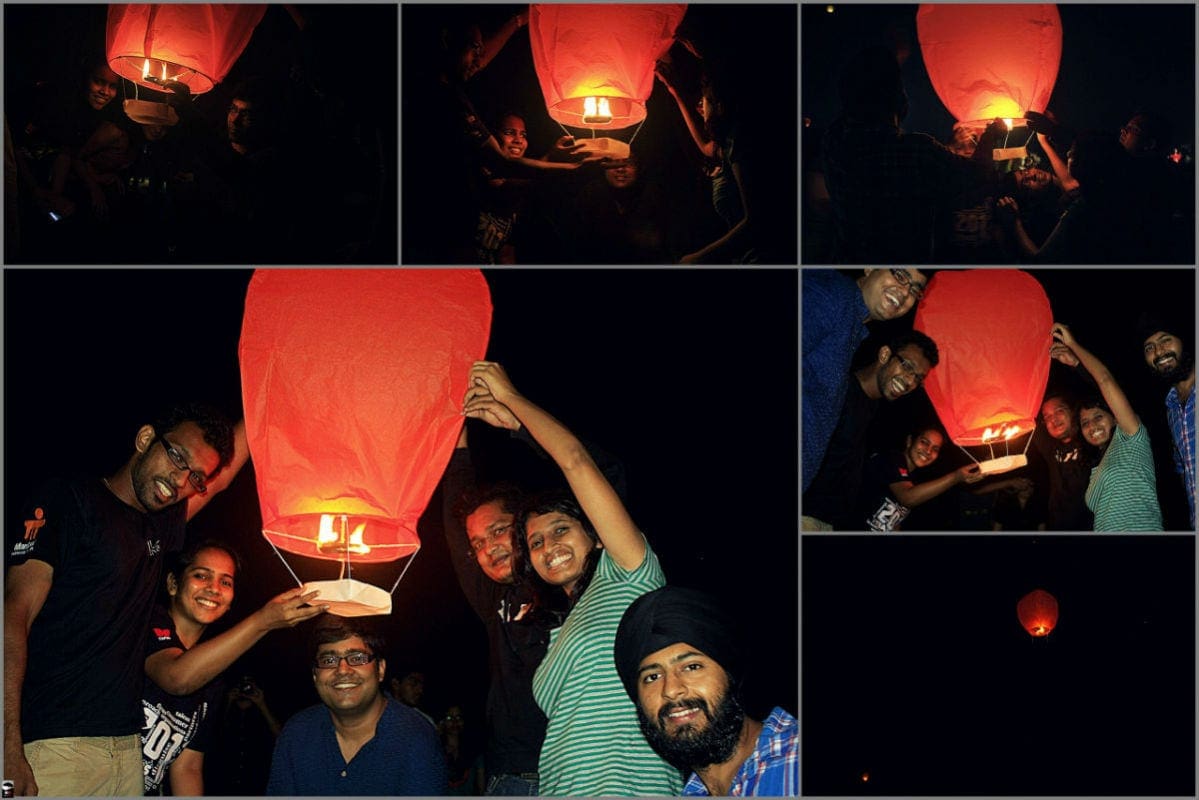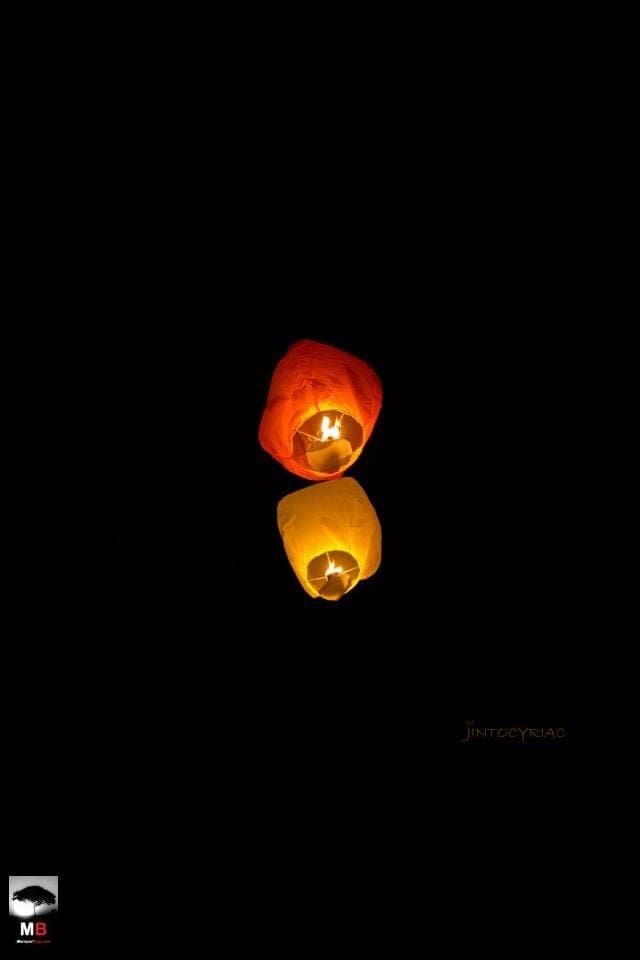
“The night has a thousand eyes, and the day but one; Yet the light of the bright world dies with the dying sun. The mind has a thousand eyes, and the heart but one; yet the light of a whole life dies when love is done.”
— Francis William Bourdillon
It was a beautiful evening.
No ominous rain clouds, not unduly hot and humid, and a very promising event ahead.
When I reached End-Point, frankly, I was simply shocked by the crowd that has assembled there.
There was a queue! With a perpetual aversion to queues, I almost made up my mind to walk away from there, sit down in Paratha Point, finish dinner and head back. Oh Boy! Am I glad I did not follow up on that train of thought.
It was well-organized despite the huge crowd pouring in.

Photo Courtesy: Vikas Arora
The magic began even before I reached the field itself. From a distance I could see what seemed like a sea of bobbing lights stretched out, and as the first few waves of lanterns took off… the view was mesmerizing. It was like a naval exercise with the first rows taking off , almost coinciding with a geese V-flight pattern, closely followed on their heels by the successive rows… within a matter of seconds the sky was draped with a glittery royal gown of the most delightful colours, and how its flowed and rustled.
Photo Courtesy: Vikas Arora
The sight was one of those that , similar to an experience of Swami Vivekananda, could put you in a hypnotic trance. Wave after wave of lights gently, slowly, quietly taking flight and studding the vast sky with a warm inviting glow.

Photo Courtesy: Vikas Arora
The lanterns appeared like thousands of floating candles in the sky, shining in a bid to spread the message of human good, speaking against Child labour and pollution. Initiated by AIESEC Manipal University, this year Manipal celebrated Diwali in an eco friendly and noise free way. People huddled together lighting up the lanterns, sharing light, sharing laughs and sharing in the sheer feast for the eyes that the moment provided. The energy and enthusiasm as their combined effort bore fruit was what I could take away from the evening.

Photo Courtesy: Vikas Arora
Every year AIESEC Manipal takes an initiative for implementing some different ways to celebrate the festival of lights in the least harmful way. And this year it is with sky lanterns.
Sky lanterns are basically air borne paper lanterns.

Photo Courtesy: Sambit Mohanty
The main reason behind initiating sky lanterns is because of the increasing pollution and due to that the environmental fluctuations which we are facing everyday in our day to day lives and the amount of noise pollution and air pollution produced by bursting crackers in Diwali is immense so in order to reduce the amount of pollution AIESEC Manipal has organised as the event Sky lantern Project. The other reason behind this project is Child labour. There are lakhs of children bellow the age of 14 years who are involved in these fireworks factories in producing the crackers. These children work for 12 hours a day and are exposed to harmful chemicals which causes bronchi diseases and inspite of all this they are just paid 20 rupees a day and the reason behind this is poverty and illiteracy.

Photo Courtesy:Jinto Cyriac

Photo Courtesy: Jinto Cyriac

Photo Courtesy: Jinto Cyriac
In order to bring change in the lives of these unfortunates, Rakesh Vanka a film maker by passion, a humanist by ideals, an entrepreneur by profession. He came up with the Idea of burning sky lanterns on Diwali in India. Rakesh Vanka broke the Guinness World Record of Indonesia set in 2009 by releasing maximum number of sky lanterns in the sky at once. The man sees this as a revenue generator for the charitable activity of Vanka Foundation (formerly Lakshmi Vanka Charitable school) which is educating 2486 children who were rescued from bonded labour from the districts of East Godavari and West Godavari districts of Andhra Pradesh. And AIESEC has joined hands for their cause and has decided that the money raised from this event will go in the welfare of child labours in the firework factories of Sivakasi (firework capital of our country).

Photo Courtesy: Vikas Arora

Photo Courtesy: Vikas Arora
A very commendable effort and an evening well-spent.
This article is co-authored by Sambit Mohanty and Dr. Vishaal Bhat. Pictures provided by Vikas Arora (student at MIT, Manipal) and Jinto Cyriac (1st year student at TAPMI, Manipal).

Be the first to comment